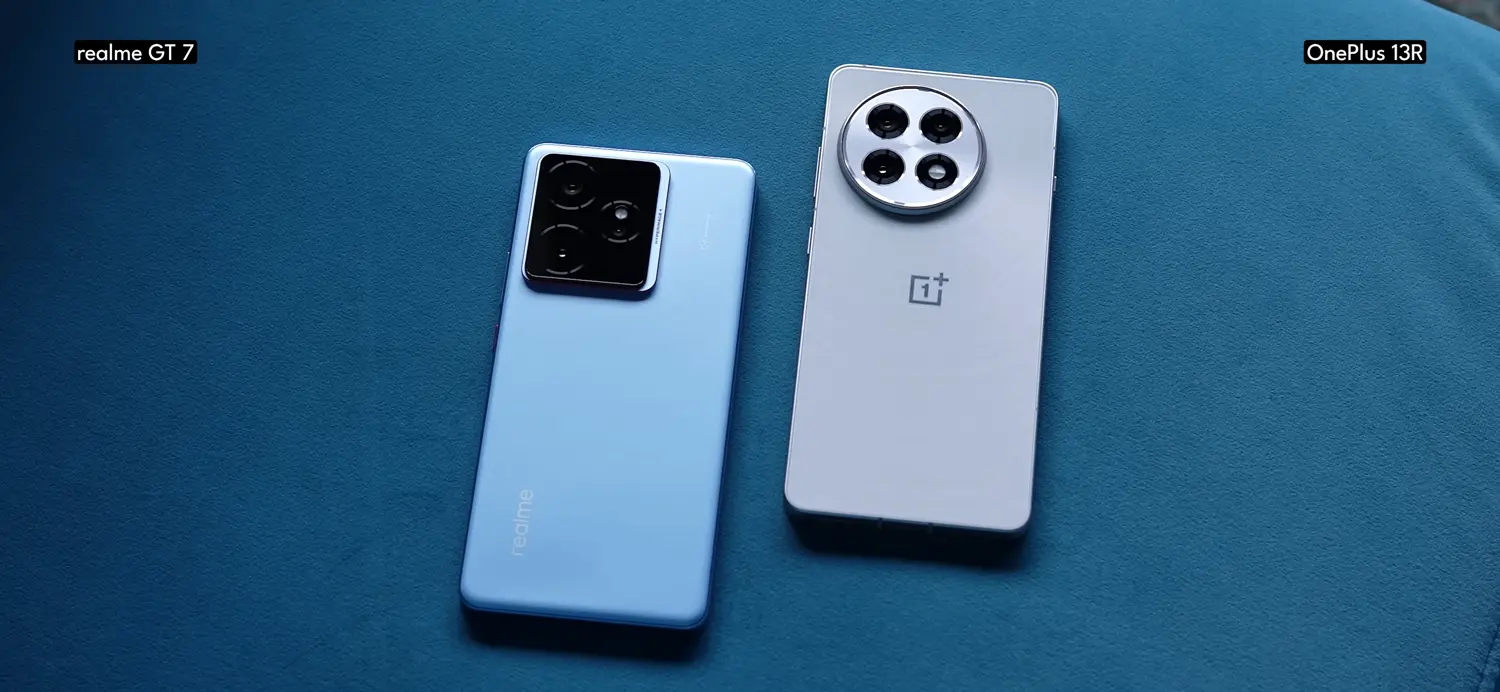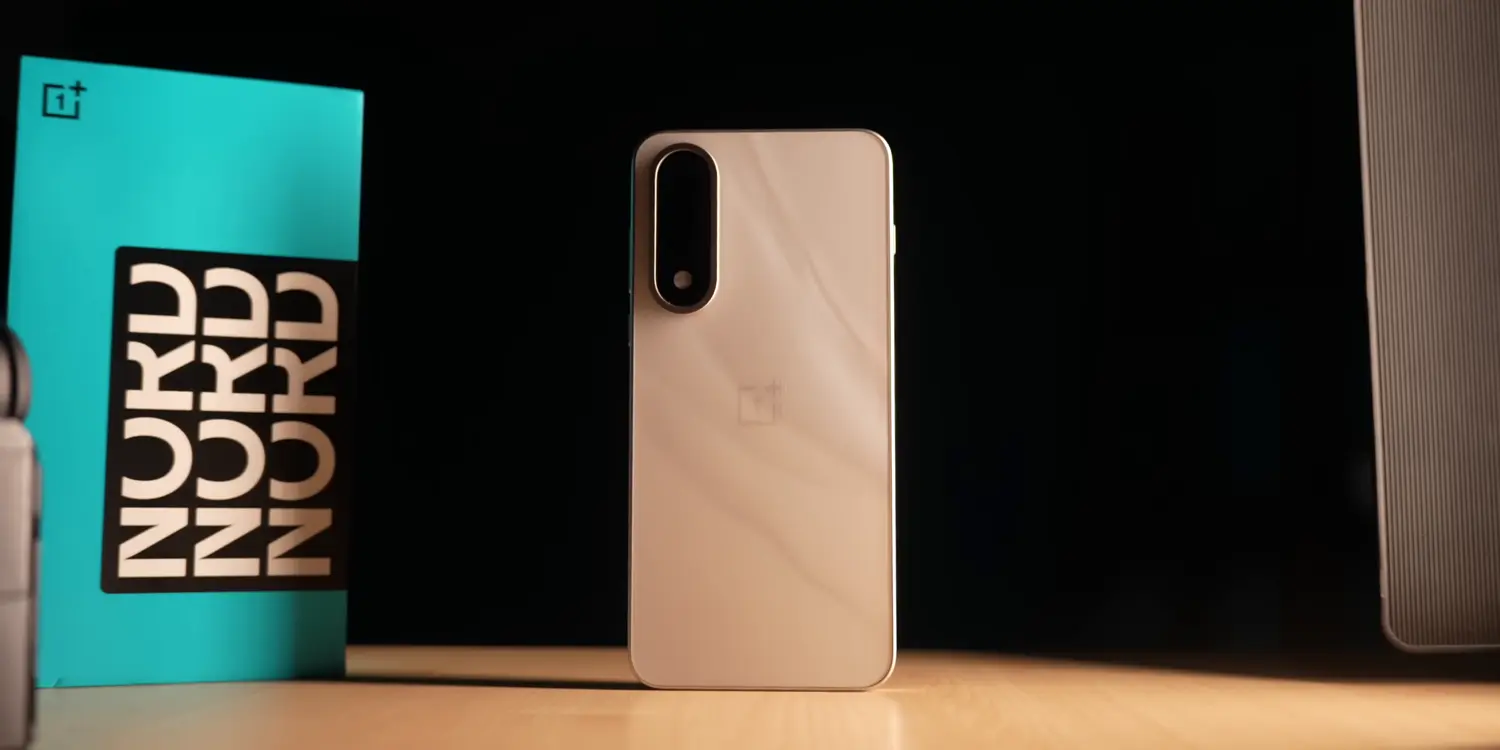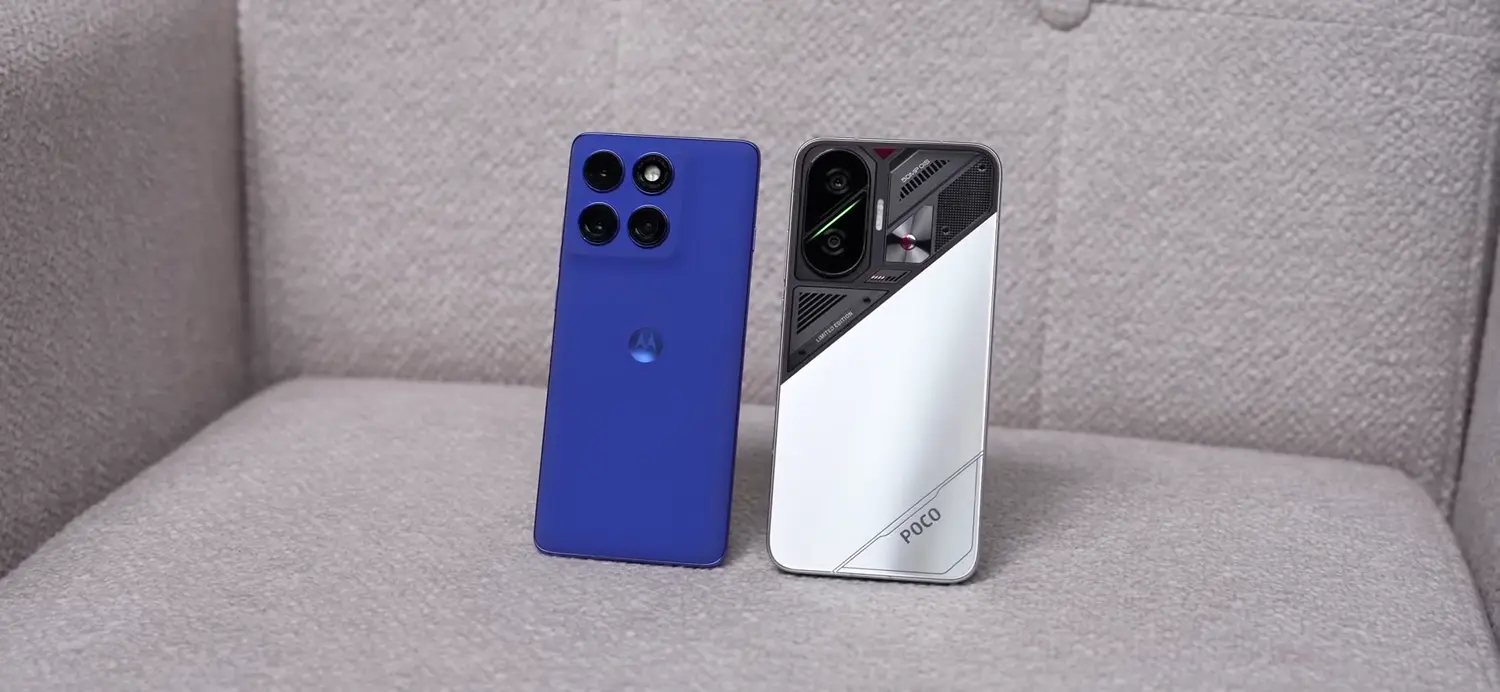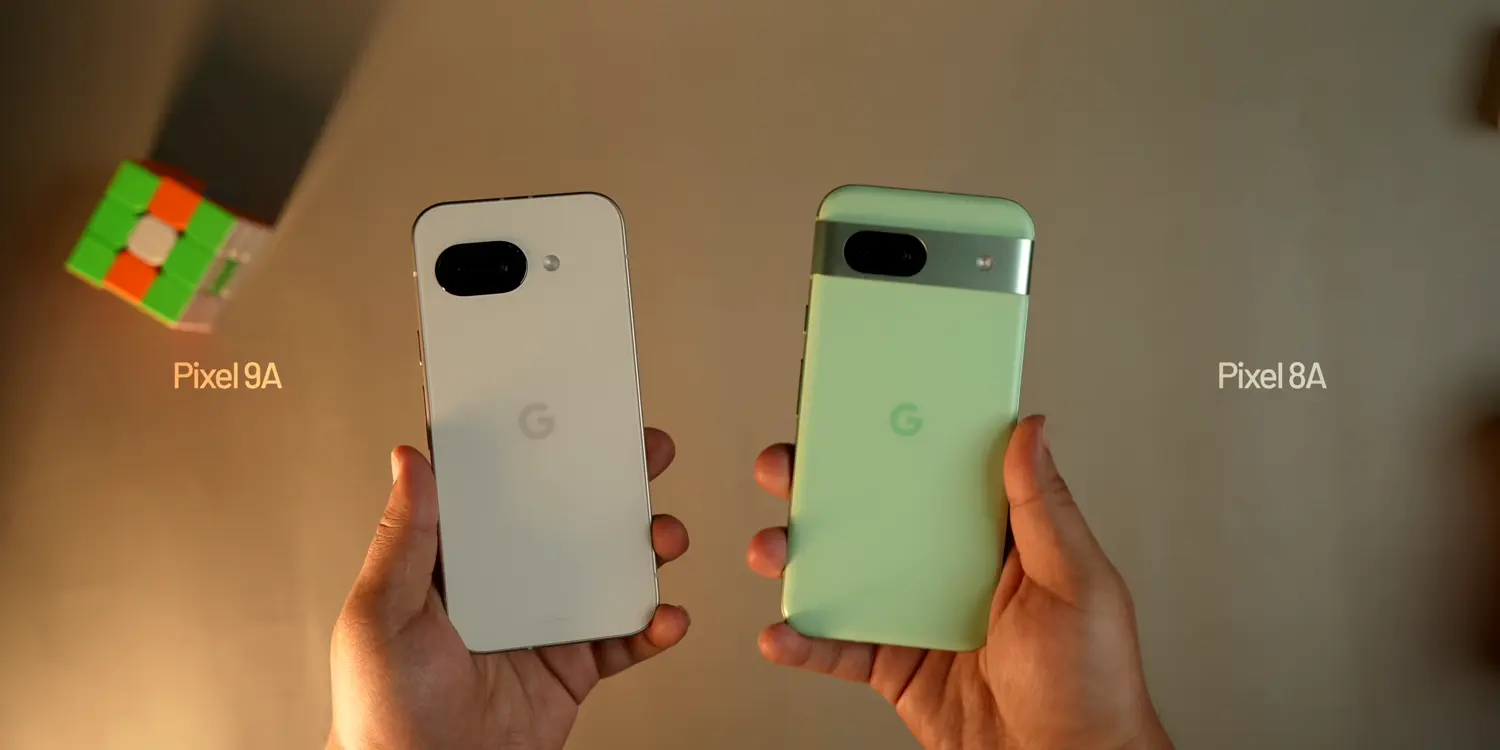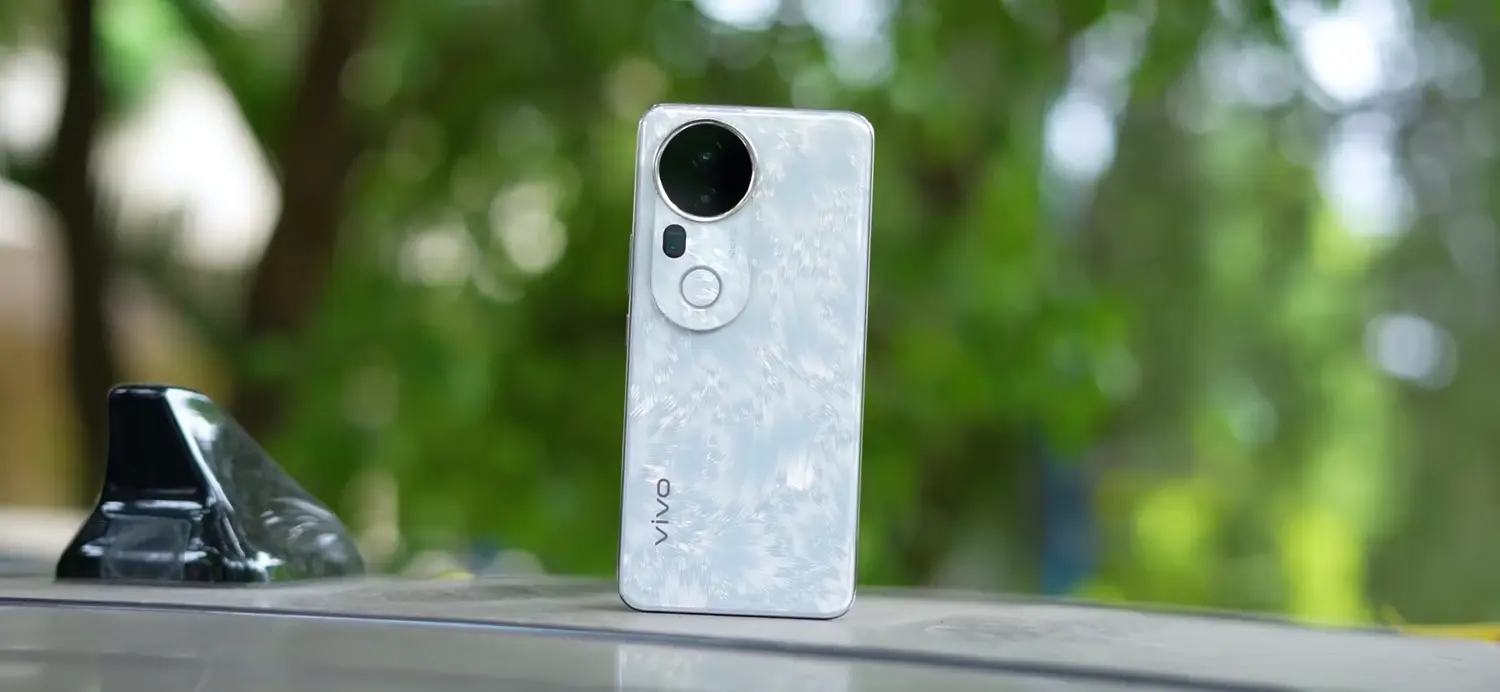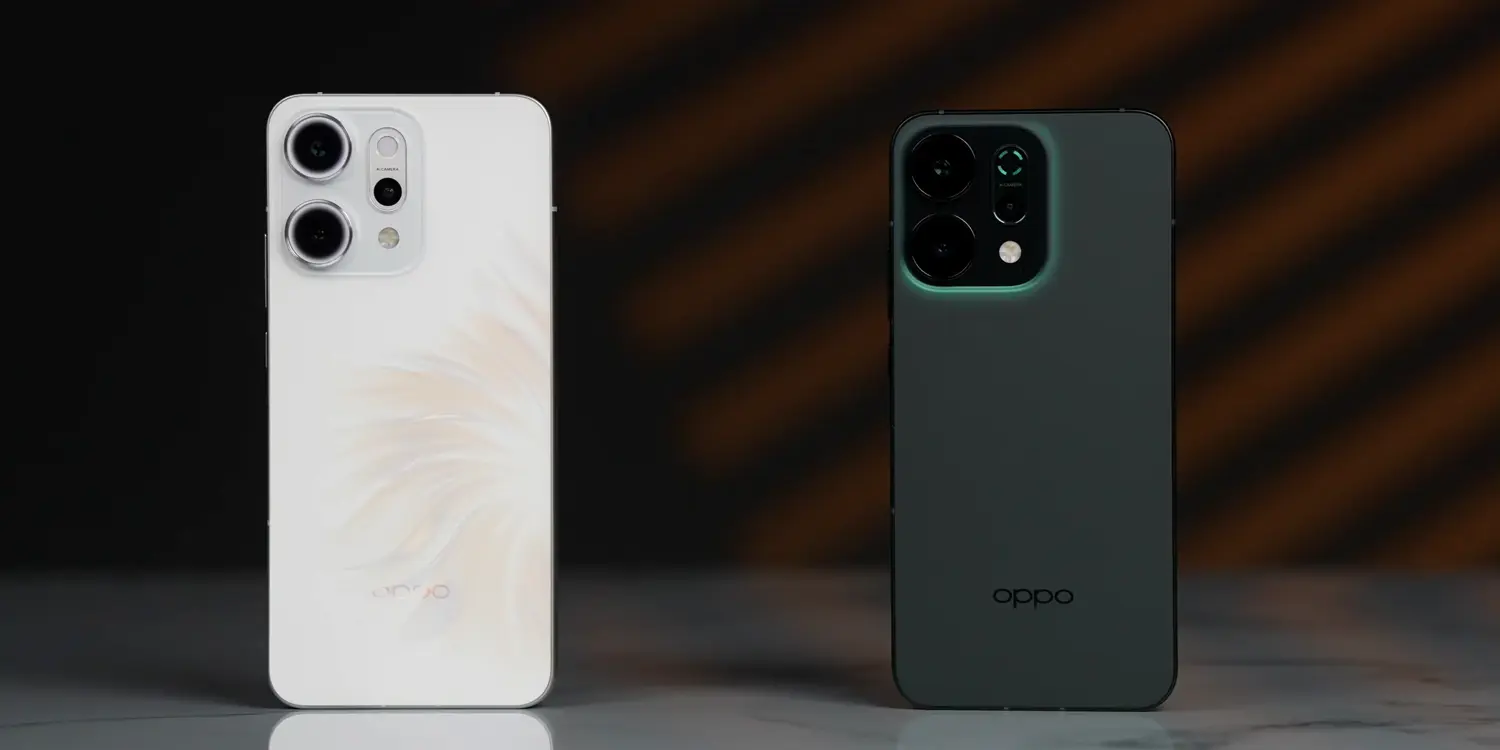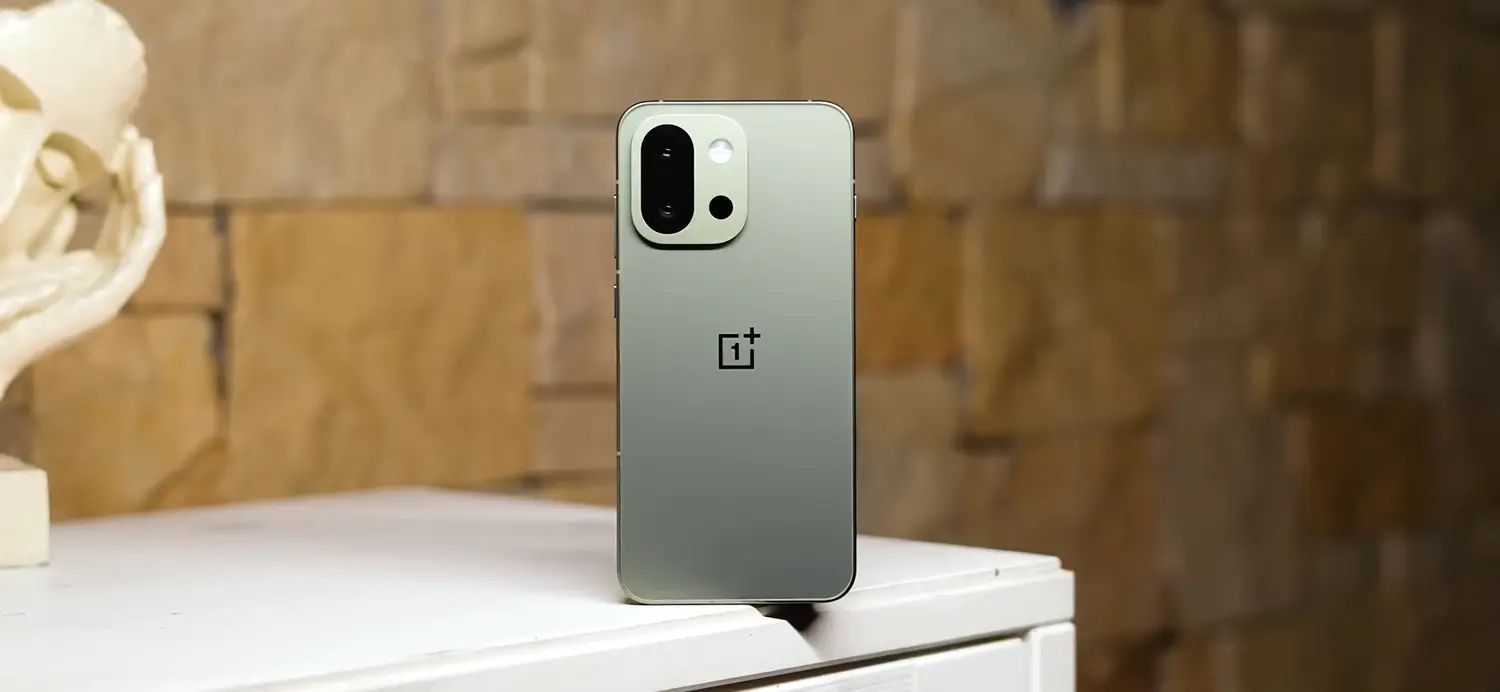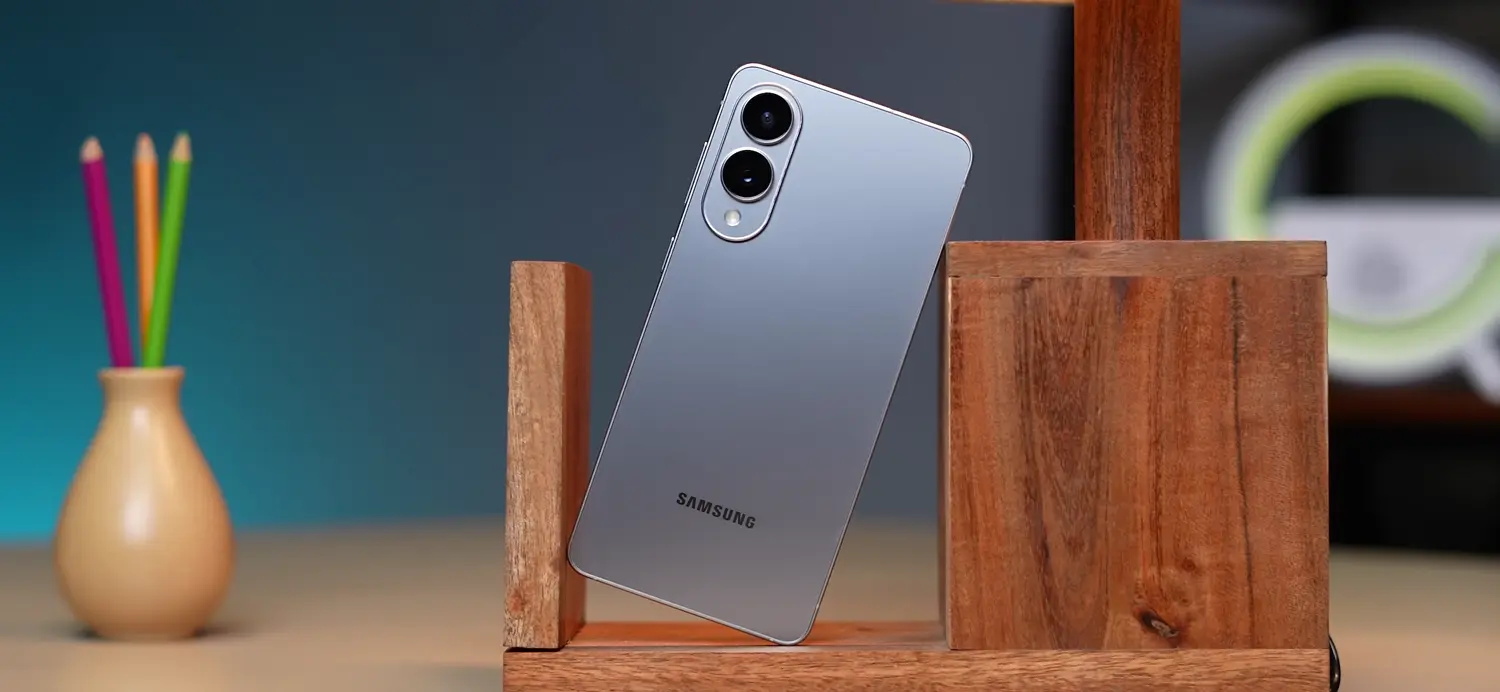The smartphone market in India is buzzing with exciting options, and two devices stealing the spotlight are the Realme GT 7 and the OnePlus 13R. Both phones promise flagship-level performance at a mid-premium price, making them direct competitors. The Realme GT 7 boasts a massive 7,000mAh battery, MediaTek Dimensity 9400e chipset, and an IP69 rating, while the OnePlus 13R offers a premium build and the trusted Snapdragon 8 Gen 3 processor. But specs on paper are one thing, and real-world performance is another. In this article, we’ll dive deep into both phones, comparing their design, display, performance, battery life, cameras, software, and more to help you decide which one is worth your money. If you’re wondering, “Should I buy the Realme GT 7 or the OnePlus 13R?”—this detailed review will guide you.
Design and Build Quality: Premium vs Practical
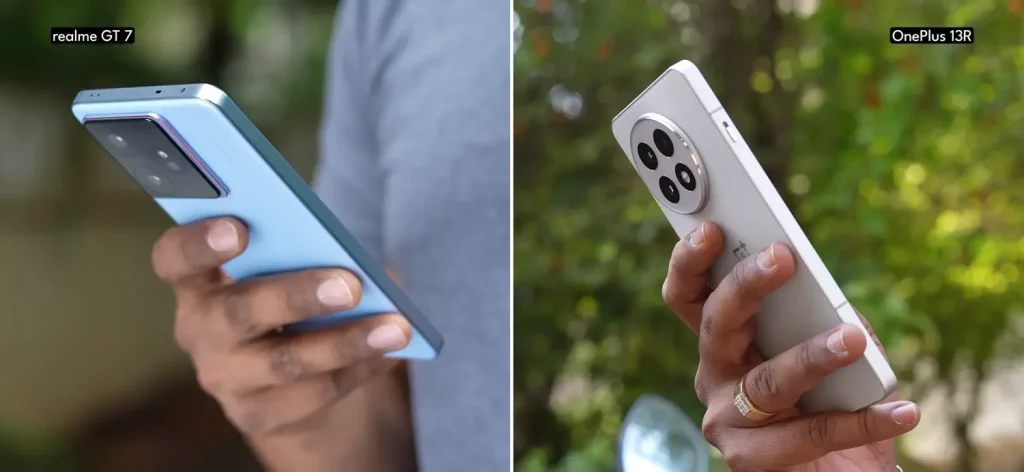
When you first pick up the Realme GT 7, its slim 8.3mm chassis is impressive, especially considering it houses a massive 7,000mAh battery. The phone feels surprisingly light, which is great for daily use, but there’s a catch—it uses an all-plastic build for both the frame and back. This keeps the weight down but doesn’t feel as premium as glass or metal. The OnePlus 13R, on the other hand, opts for a glass back and a metal frame, giving it a more luxurious in-hand feel. Despite its slightly smaller 6,000mAh battery, the OnePlus 13R feels heavier due to these premium materials.
Both phones feature Corning Gorilla Glass 7i for display protection, ensuring decent durability against scratches. However, the Realme GT 7 has a significant advantage with its IP68/IP69 rating, offering top-tier water and dust resistance—perfect for those who need a rugged device. The OnePlus 13R, with its IP65 rating, provides basic splash resistance but falls short in harsher conditions.
OnePlus fans will love the iconic alert slider on the 13R, a feature that lets you quickly toggle between silent, vibrate, and ring modes. Rumors suggest this slider might be replaced in future models, so it’s a bonus while it lasts. The Realme GT 7 skips this feature, which might disappoint some users. However, both phones share a downside: they use USB-C 2.0 ports, meaning slower data transfer speeds compared to flagship standards.
Verdict: If you prioritize a premium build and the alert slider, the OnePlus 13R is the way to go. But if durability and water resistance matter more, the Realme GT 7’s IP69 rating makes it a better choice.
Display: Bright and Vibrant, But Subtle Differences
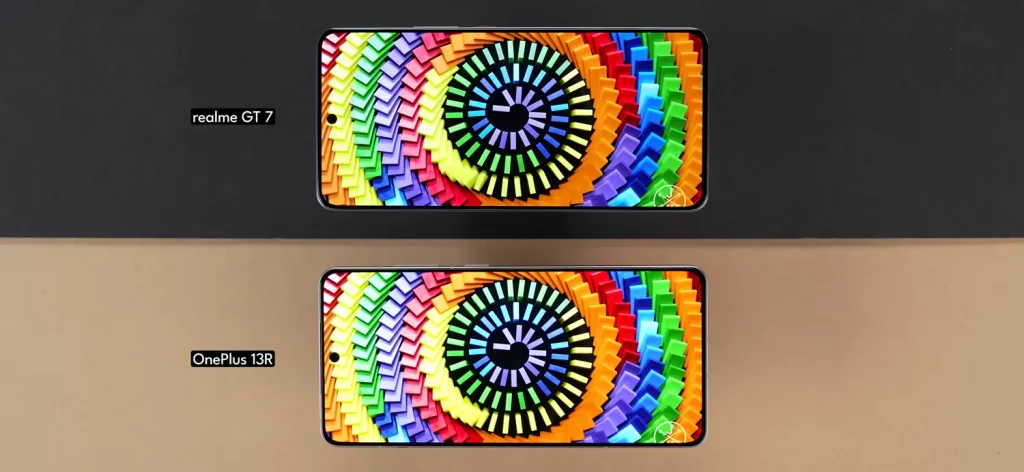
Both the Realme GT 7 and OnePlus 13R come with 6.78-inch AMOLED displays with a 120Hz refresh rate, delivering smooth scrolling and vibrant colors. However, there are key differences. The OnePlus 13R uses LTPO 4.1 technology, allowing the refresh rate to dynamically adjust from 1Hz to 120Hz, which saves battery during less demanding tasks like reading. The Realme GT 7 lacks LTPO but offers a variable refresh rate (60Hz, 90Hz, or 120Hz) based on content, which is still efficient but not as flexible.
When it comes to brightness, the Realme GT 7 takes the lead with a peak brightness of 6,000 nits (in HDR scenarios), compared to the OnePlus 13R’s 4,500 nits. This makes the GT 7 better for outdoor visibility, especially in bright sunlight. However, in real-world testing, the difference is subtle, and the OnePlus 13R sometimes appears brighter when watching HDR content on platforms like YouTube. Both phones support Dolby Vision and HDR10+ for streaming on Netflix, ensuring a great viewing experience, though the HDR tuning isn’t as refined as on some premium flagships.
Both displays use BOE panels and feature 2160Hz PWM dimming, which reduces flicker and is great for users sensitive to low-light AMOLED displays. Color reproduction is nearly identical, with accurate skin tones and landscapes. In outdoor conditions, both phones perform equally well, making it hard to pick a winner here.
Verdict: The Realme GT 7 edges out slightly with higher peak brightness, but the OnePlus 13R’s LTPO technology makes it more power-efficient. It’s a close call, so choose based on whether brightness or battery efficiency matters more to you.
Performance: Power-Packed but Different Strengths
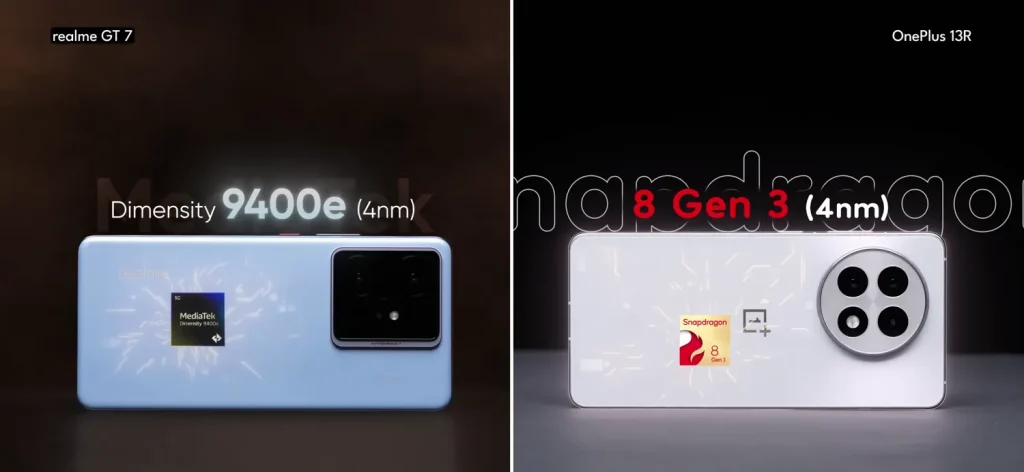
Performance is where these phones shine, but they take different paths. The Realme GT 7 is powered by the MediaTek Dimensity 9400e chipset, while the OnePlus 13R uses the Qualcomm Snapdragon 8 Gen 3. Both are built on a 4nm process and paired with LPDDR5X RAM and UFS 4.0 storage, ensuring fast app launches and multitasking.
In benchmarks, the Realme GT 7 pulls ahead. It scores higher in AnTuTu and Geekbench, thanks to the Dimensity 9400e’s stronger CPU with more powerful big and medium cores. In a 30-minute CPU throttle test, the GT 7 also showed better stability, maintaining higher performance levels. This is partly due to its advanced cooling system, featuring a 7,700mm² vapor chamber and a 4,400mm² graphene layer over the battery, which keeps temperatures in check.
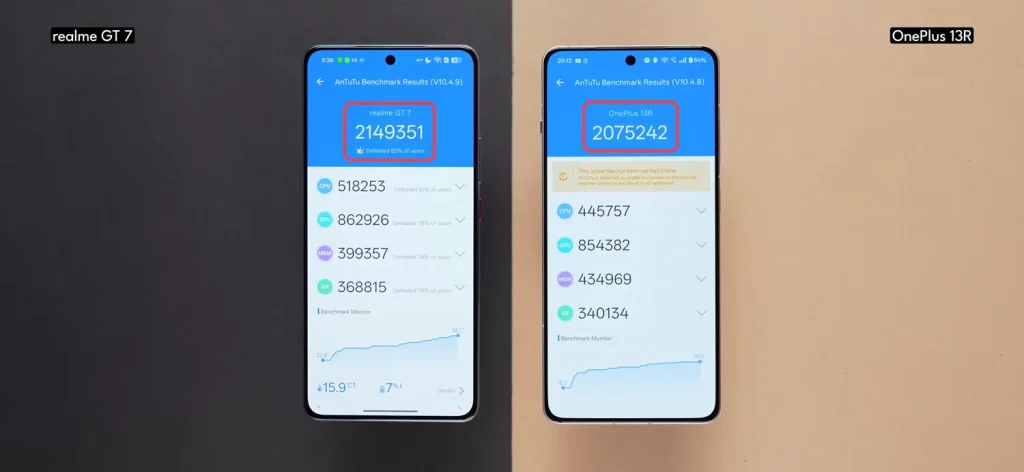
However, the OnePlus 13R’s Snapdragon 8 Gen 3 has a superior GPU, making it better for gaming. In tests with games like Genshin Impact, the 13R delivered slightly higher frame rates and better performance in GPU-heavy tasks, as seen in 3DMark Wild Life scores. That said, the Realme GT 7 runs cooler during extended gaming sessions, which is a big plus for gamers who play for hours.
Verdict: For raw CPU power and thermal efficiency, the Realme GT 7 is better. If gaming performance is your priority, the OnePlus 13R’s GPU gives it an edge.
Battery Life and Charging: Realme’s Big Win

Battery life is a standout feature for the Realme GT 7, thanks to its massive 7,000mAh battery. In testing, it delivered an impressive 9 hours and 30 minutes of screen-on time, outlasting the OnePlus 13R’s 6,000mAh battery, which managed 8 hours and 30 minutes. Both are excellent for heavy users, but the GT 7’s larger capacity and optimized software give it better battery autonomy.
Charging speeds also favor the Realme GT 7, with its 120W fast charging fully juicing up the phone in about 40 minutes. The OnePlus 13R, with 80W SUPERVOOC charging, takes around 50-53 minutes. Neither phone supports wireless charging, which is a slight disappointment at this price point.
Verdict: The Realme GT 7 is the clear winner for battery life and charging speed, making it ideal for users who need long-lasting power and quick top-ups.
Camera Performance: Realme’s Versatility vs OnePlus’s Low-Light Prowess
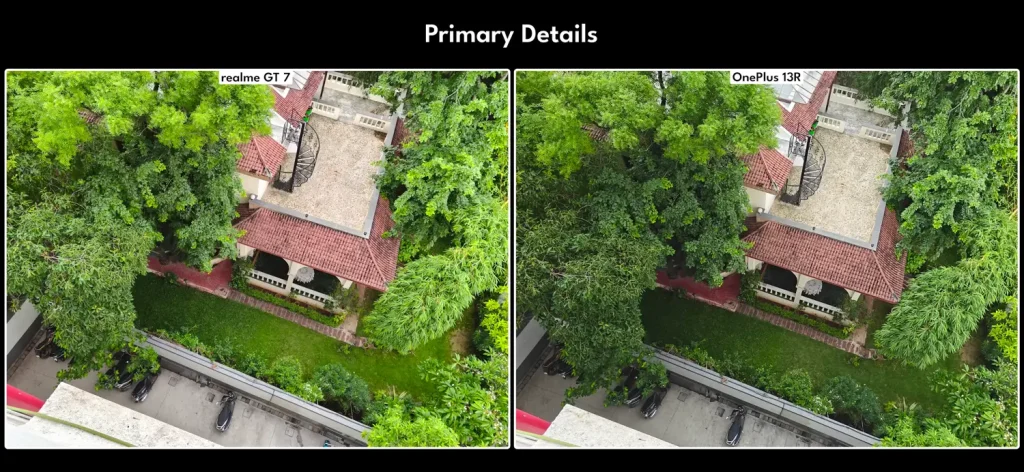
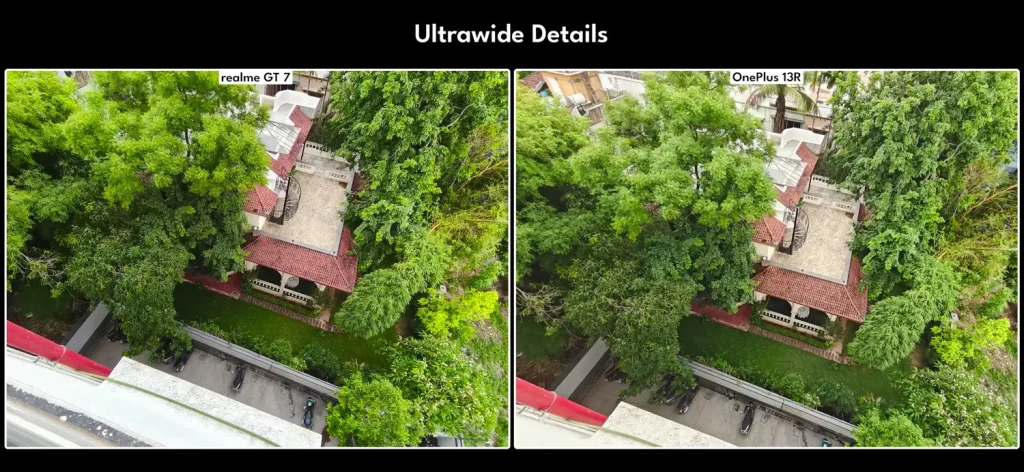
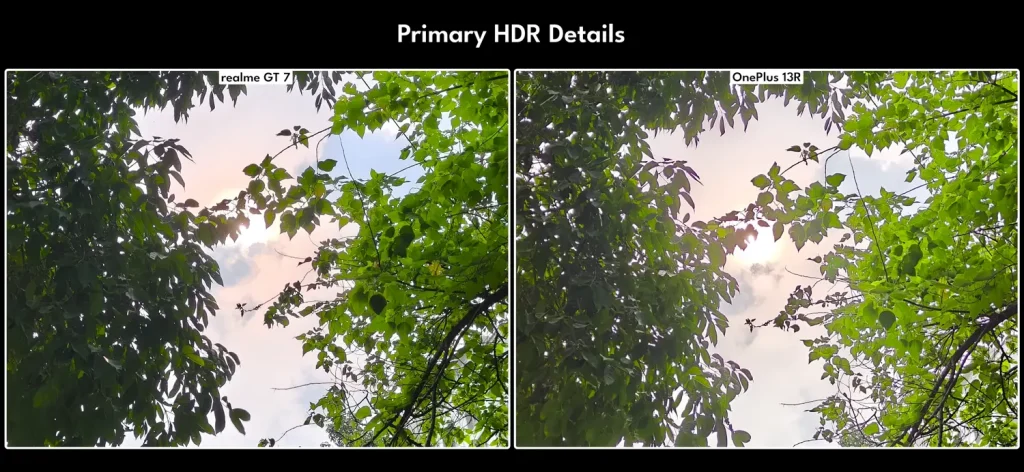
Both phones feature triple-camera setups with a 50MP primary sensor, an 8MP ultra-wide, and a 50MP 2x telephoto lens, plus a front-facing selfie camera. However, the Realme GT 7 uses a Sony IMX906 main sensor, while the OnePlus 13R has a Sony LYT-700 (essentially the same sensor with a different name). The ultra-wide and telephoto lenses are identical, but the GT 7 has a 32MP selfie camera compared to the 13R’s 16MP.
In daylight, both phones capture detailed images, but the Realme GT 7 tends to oversharpen, which can make photos look less natural. The OnePlus 13R retains better detail in 100% crops, whether using the primary, ultra-wide, or telephoto lens. It also pulls more detail from shadows in HDR shots. However, the Realme GT 7 shines in color reproduction. It offers two modes: Vibrant and Crisp (neutral). The Crisp mode delivers more accurate colors and skin tones, especially for portraits, making it better for realistic photography. The OnePlus 13R’s colors are vibrant but sometimes less true-to-life.
For selfies, the Realme GT 7’s 32MP camera captures more detail and better skin tones in daylight, with superior edge detection in portraits. However, in low light, the OnePlus 13R takes the lead across all lenses, producing brighter images with more detail. This makes it a better choice for night photography.
Video recording is where the Realme GT 7 pulls ahead significantly. It supports 4K 60fps, 4K 120fps, 8K 30fps, and 4K 60fps Dolby Vision with the primary camera, plus 4K 60fps with the selfie camera. The OnePlus 13R is limited to 4K 60fps for the main camera and 1080p 30fps for selfies. Both phones offer good stabilization and HDR in SDR videos, but the Realme GT 7’s versatility gives it an edge. In low-light videos, the OnePlus 13R performs better, consistent with its photography advantage.
Verdict: The Realme GT 7 is better for versatile video recording and color-accurate photos, while the OnePlus 13R excels in low-light conditions. Choose based on your photography needs.
Software: Clean vs Feature-Rich
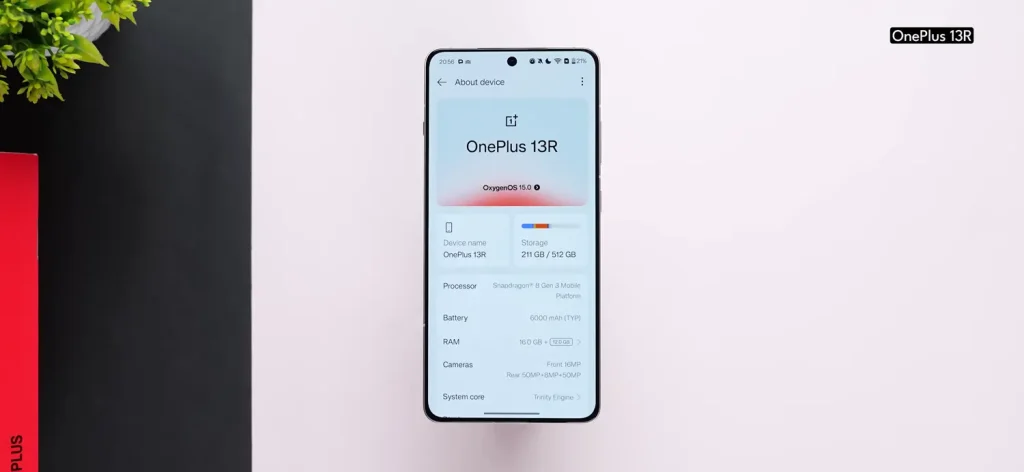
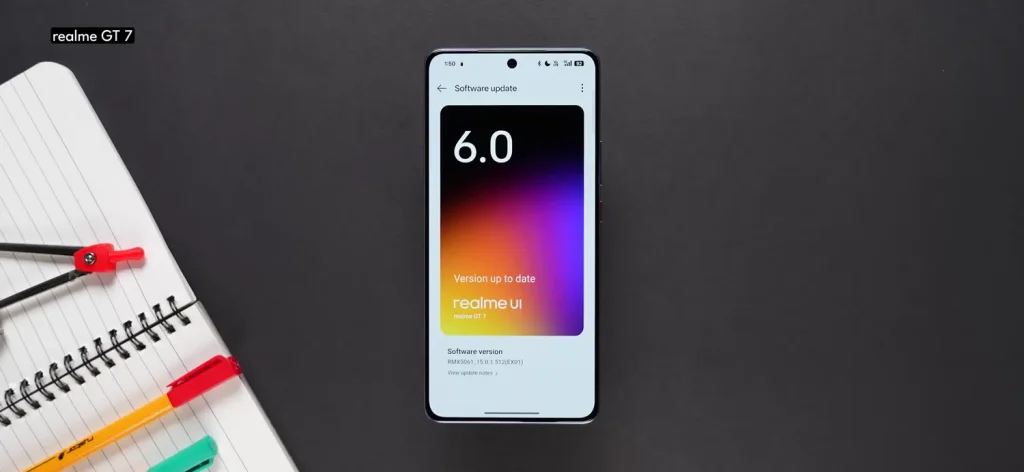
Both phones run Android 15, with the Realme GT 7 featuring Realme UI 6.0 and the OnePlus 13R running OxygenOS 15. Both promise 4 years of OS updates and 6 years of security patches, ensuring long-term support. The OnePlus 13R offers a cleaner software experience with minimal bloatware and no Glance integration, which some users find intrusive. The Realme GT 7 comes with pre-installed apps and Glance, though you can uninstall or disable them.
Feature-wise, both phones are similar, offering Flux themes, live activities, O+ Connect for media transfer to iPhones, smart sidebar, split-screen multitasking, large folders, floating windows, app lock, and AI features like AI Eraser, AI Detail Boost, AI Unblur, Reflection Eraser, AI Notes Assistant, and Circle to Search. However, the Realme GT 7 adds unique AI features like AI Planner (adds events to your calendar with a double-tap), AI Translator, and AI Smart Loop, making it more feature-rich for productivity.
Verdict: The OnePlus 13R is ideal for those who prefer a clean, bloat-free experience, while the Realme GT 7 suits users who want extra AI-driven features.
Connectivity and Audio: Neck and Neck
Both phones support Wi-Fi 7, Bluetooth 5.4, NFC, and multiple 5G bands, ensuring excellent network performance, even in areas with spotty coverage like Pune. Audio quality is identical, with stereo speakers delivering clear vocals and decent bass. Both support high-res Bluetooth codecs (LSDC and LDAC) for wireless audio enthusiasts. Haptic feedback is also similar, with crisp and tight vibrations thanks to O-Haptics integration.
Verdict: No clear winner here—both phones offer top-notch connectivity and audio.
Specifications Table
| Feature | Realme GT 7 | OnePlus 13R |
|---|---|---|
| Display | 6.78-inch AMOLED, 120Hz, 6,000 nits | 6.78-inch AMOLED, LTPO 4.1, 120Hz, 4,500 nits |
| Processor | MediaTek Dimensity 9400e | Qualcomm Snapdragon 8 Gen 3 |
| RAM/Storage | Up to 12GB/512GB (LPDDR5X, UFS 4.0) | Up to 16GB/512GB (LPDDR5X, UFS 4.0) |
| Battery | 7,000mAh, 120W fast charging | 6,000mAh, 80W SUPERVOOC charging |
| Main Camera | 50MP Sony IMX906 (OIS) | 50MP Sony LYT-700 (OIS) |
| Ultra-Wide Camera | 8MP | 8MP |
| Telephoto Camera | 50MP, 2x optical zoom | 50MP, 2x optical zoom |
| Selfie Camera | 32MP | 16MP |
| Video Recording | 4K 60/120fps, 8K 30fps, 4K 60fps Dolby Vision (main); 4K 60fps (selfie) | 4K 60fps (main); 1080p 30fps (selfie) |
| Software | Realme UI 6.0 (Android 15) | OxygenOS 15 (Android 15) |
| Build | Plastic frame and back, IP68/IP69 | Metal frame, glass back, IP65 |
| Connectivity | 5G, Wi-Fi 7, Bluetooth 5.4, NFC | 5G, Wi-Fi 7, Bluetooth 5.4, NFC |
| Price (Starting) | ₹39,999 (8GB/256GB) | ₹42,999 (12GB/256GB) |
Should You Buy the Realme GT 7 or OnePlus 13R?
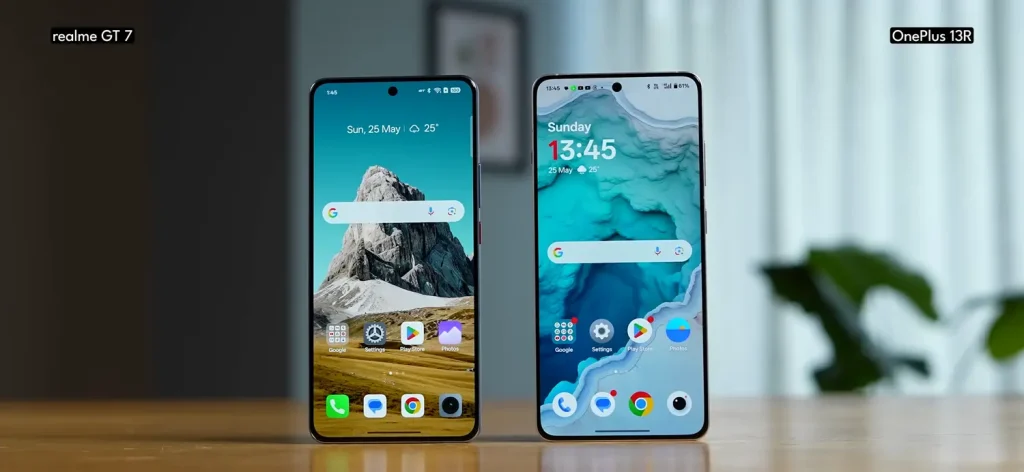
The Realme GT 7 and OnePlus 13R are incredibly close competitors, each excelling in different areas. The Realme GT 7 stands out with its massive 7,000mAh battery, faster 120W charging, superior IP69 rating, better thermal efficiency, and more versatile camera capabilities, especially for video recording. It also offers unique AI features and a lower starting price of ₹39,999, making it a value-packed choice.
The OnePlus 13R counters with a premium glass-and-metal build, the iconic alert slider, a cleaner software experience, and better low-light camera performance. Its Snapdragon 8 Gen 3 chipset also gives it a slight edge in gaming. Priced at ₹42,999, it’s slightly more expensive but feels more luxurious.
Who should buy the Realme GT 7?
- If you want the best battery life and fast charging.
- If you need a phone with excellent water and dust resistance (IP69).
- If you prioritize video recording and color-accurate photos.
- If you want more AI features and a lower price.
Who should buy the OnePlus 13R?
- If you prefer a premium build with glass and metal.
- If you value the alert slider and a bloat-free software experience.
- If low-light photography and gaming performance are priorities.
- If you’re a OnePlus fan who trusts OxygenOS.
Is It Worth It?
Both phones deliver flagship-level performance at a mid-premium price, making them excellent value for money. The Realme GT 7 is ideal for users who want a feature-packed phone with long battery life and rugged durability. The OnePlus 13R, meanwhile, appeals to those who prioritize premium design and a polished software experience. Ultimately, your choice depends on what matters most—durability and battery life or premium build and gaming prowess. Both are fantastic options under ₹45,000, and you can’t go wrong with either.
